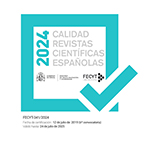Pavese against the tide : I Dialoghi con Leucò
Abstract
The present study aims at analyzing Cesare Pavese’s Dialoghi con Leucò within the context the year of its publication (1947), with Neorealism spreading all around, by taking into account the prehistory of the debate on «myth» started with romanticism. By reconstructing this cultural approach, one can understand Pavese’s difficulties in trying, as it turns out from his correspondence, to clarify the meaning of this eccentric work of his; a work he even attempted to hide by publishing, in the same period of time, a totally different novel (Il compagno). Under the respect of its structure, we emphasize the stylistic similarities between the Dialoghi and the genre of dialogue (from Plato to Leopardi), and we highlight those quotations of Pindaro, Manzoni, Conrad, and Ungaretti. Finally, we recall Pavese’s influence on Calvino for what concern the idea that the importance of the character withn a novel should be diminished, and, by that, we direct the attention toward Pavese’s contribution to the modern conception of the novel in the second half of the 20th century.Downloads
Article download
License
In order to support the global exchange of knowledge, the journal Cuadernos de Filología Italiana is allowing unrestricted access to its content as from its publication in this electronic edition, and as such it is an open-access journal. The originals published in this journal are the property of the Complutense University of Madrid and any reproduction thereof in full or in part must cite the source. All content is distributed under a Creative Commons Attribution 4.0 use and distribution licence (CC BY 4.0). This circumstance must be expressly stated in these terms where necessary. You can view the summary and the complete legal text of the licence.










